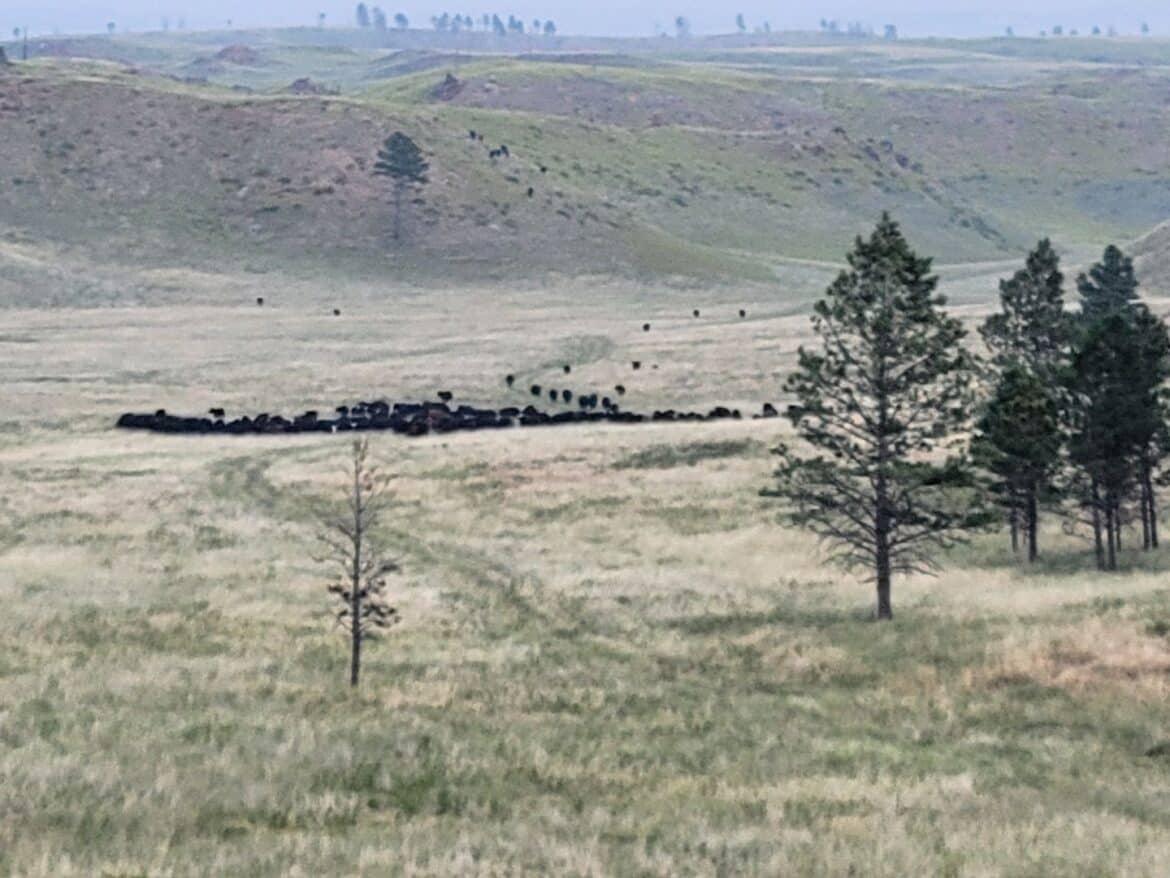by Megan Van Emon, MSU Extension Beef Cattle Specialist
Recently there have been several producers asking about why their cattle are bunching up and standing in groups instead of grazing. Cattle have also been observed standing in water. These behaviors are mainly caused by stable flies.
Stable flies are a primary concern in wet weather and in areas with a mixture of fermenting organic matter, manure, feed grounds, and soil. Feedlots, especially around feed bunks are an optimum environment for stable flies to lay eggs. However, due to the wet weather many areas of Montana have received, stable fly populations have increased, causing cattle to bunch up.
Stable flies are blood feeders and will primarily attack the front legs. The bites can be painful to cattle, and this causes them to bunch up or stand in water to avoid the flies. Stable flies live between 14-24 days and can travel over 10 miles.
When cattle bunch up or spend long periods standing in water, production can be negatively impacted. Based on research completed at the University of Nebraska, average daily gain of cattle can be reduced by 0.44 lbs/head if no treatment is administered. The economic threshold for treatment is 5 stable flies per leg.
One of the challenges for treating adult stable flies is needing to use a spray to control them. Sprays needed to control stable flies need to be applied to the cattle more often than other fly specie control treatments. Make sure to read the insecticide label for treatment method, dosage, and species controlled by treatment. Many methods of control for horn or face flies are not labeled for stable fly control and will not provide control of the specie. If cattle are located in areas with decaying organic material, the ground may also be treated with larvicide labeled for stable flies, which will reduce the development of adult stable flies.
Custer County Ag Extension Agent Mike Schuldt writes that treatment of animals with residual insecticides can aid in control, thorough application to the lower body parts of livestock is important. Most Ivermectin treatments are not labeled for stable flies and are not effective control.
Schuldt also says that proper use of modified traps, using either treated targets or solar-powered electrocution grids, can be effective in reducing stable fly populations. Stable fly larvae develop in manure, spilled feed and decaying vegetation. Management of larval habitats by sanitation is the key to stable fly control.
As the weather changes and pastures begin to dry, stable fly numbers may be reduced. However, treatment may need to be considered if the economic threshold has been reached.
This table is from a University of Nebraska publication on the various products for Stable fly control
| Table 1: Insecticides labeled for direct animal application and their mode of action (MOA). | |
| Insecticide Product | MOA (mode of action) Group |
| Co-Ral 6.15% | 1B |
| Prolate/Lintox-HD 11.72% | 1B |
| Rabon 50% WP | 1B |
| Vapona 40.2% (R)* | 1B |
| Permethrin 10% (many brands) | 3A |
| PyGanic 3% | 3A |
| Evergreen EC60-6 | 3A |
| Larvicides | |
| Cyromazine (Neporex®) | 17 |
| *(R) – Restricted use pesticide, can only be purchased and used by a certified applicator. | |
Click here for more information on managing stable flies from UNL.
###
Dr. Megan Van Emon, Custer County Ag Extension


